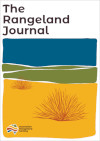Recently, many carbon and ecosystem service markets have been initiated in grazing lands and rangelands worldwide. This study, based on in depth interviews with 34 stakeholders, has provided insights into the opportunities and constraints related to environmental service market policy. We recommend an approach that incorporates the concepts of multi-stakeholder participation and roundtables, which have been advocated as a more effective way to manage wicked policy problems that span financial, regulatory, agricultural, and other systems.
This article belongs to the Collection Carbon and environmental service markets.
RJ23029 Abstract | RJ23029 Full Text | RJ23029PDF (472 KB) | RJ23029Supplementary Material (993 KB) Open Access Article





